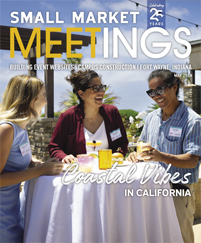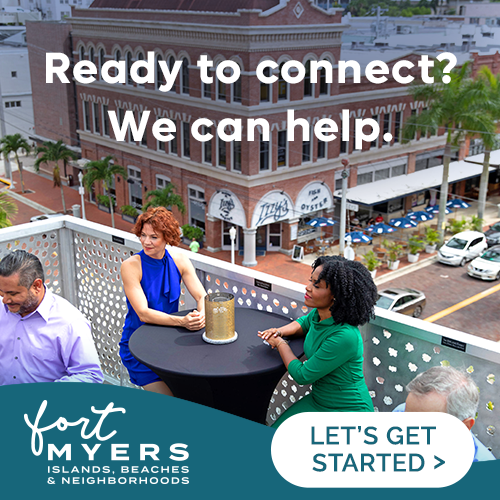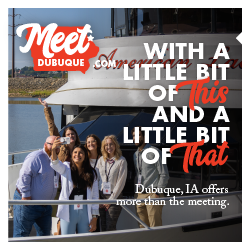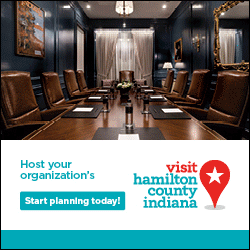Despite sharing a common name and a border, North Dakota and South Dakota are plenty different. Each state has managed to create its own signature style and culture that distinguishes it from the other. But even with noticeable differences in dialect, climate and cuisine, the two states have maintained one shared societal staple by preserving some of the region’s most quaint downtowns. The downtown districts in the Dakotas are wide-ranging, from historical hubs to shopping meccas, but all of them offer the charming feeling of walking into a Terry Redlin painting.
Here are the top downtown districts in North and South Dakota.
Bismarck, North Dakota
As the capital of North Dakota, Bismarck has a long history of welcoming visitors to the state with its scenic bluffs and strategic location along the Missouri River. Lewis and Clark were among the first visitors back in 1804, and today the city’s historic downtown gives a nod to the early settlers while offering numerous charming choices for meetings and events.
“Bismarck is a shining light of arts, culture, history and the great outdoors,” said Kim Schmidt, public relations and digital communications manager for North Dakota Tourism. “Groups will enjoy the walkability of downtown Bismarck and can get a bird’s-eye view of just what it is that makes Bismarck a true destination from the observation deck on the 18th floor of the North Dakota State Capitol.”
The Broadway Grill and Tavern offers meeting space for up to 64 guests in its private parlor, and the Radisson Hotel Bismarck can host up to 300 guests in its meeting facilities. The largest meeting and event spaces can be found inside the Bismarck Event Center, just on the outskirts of downtown, where more than 200,000 square feet of convention and trade show space await larger groups; 16 individual meeting rooms are available for rent. Just a short drive from the downtown district, at the Port of Bismarck, groups of 100 or fewer can book a trip on the historic Lewis and Clark Riverboat once it reopens in May 2019.
Watertown, South Dakota
Founded in 1879 as a stop along the Chicago and Northwestern Railroad line, Watertown boomed quickly, attracting entrepreneurial spirits. Today, the city, with a population of under 22,000, is the fifth largest in South Dakota,.
The historic downtown area offers a beautiful glimpse into the city’s past and offers a picturesque place to stroll and shop the numerous boutiques, thrift stores and art galleries that compose Watertown’s downtown. More than 60 of the buildings in the downtown district appear on the National Register of Historic Places; they include the Codington County Courthouse, which dates back to 1929; the historic M.L. St. Railroad Depot; and the County Fair Banquet Hall, which is still used for hosting meetings and events.
“Watertown has plenty of entertainment for groups,” said Keegan Carda, global media and public relations representative for the South Dakota Department of Tourism. Options include “two breweries, a distillery and an art museum with thousands of original works from a celebrated American artist,” she said.
Watertown is home to one of the most celebrated American wildlife artists: Terry Redlin. Although the Redlin Art Center is a short drive from the city center, the city’s downtown boasts a number of art galleries and even an official art walk that showcases the city’s 15 sculptures. Wander past nostalgic streetlamps and window flower boxes to enjoy the historic ambiance of this quaint downtown.
Minot, North Dakota
Minot’s quick rise from a town at the end of the Great Northern Railway’s line to a destination of more than 5,000 in less than five months earned it the nickname “The Magic City.” The residents today keep that magic alive by maintaining an active calendar of events and celebrations in the historic downtown area.
The downtown district is the lifeblood of the city; there, numerous galleries, stores and restaurants add to the romantic ambiance that the Minot Riverwalk creates for visitors traversing the city.
“We are lucky to have an area our downtown merchants spend their time and funds beautifying in the summer months and lighting up through the holidays,” said Rianne Kuhn, director of marketing and communications for the Minot Convention and Visitors Bureau at Visit Minot. “We have casual and fine-dining options, as well as food trucks, pop-up stands and, of course, Minot’s oldest restaurant: Charlie’s.”
There is a new event space being built downtown, but the current convention space is less than 10 minutes from downtown. Until the new event space is complete, the best downtown options for meetings and events are the Minot Auditorium, the Taube Museum of Art and nearby Minot State University. Hotels nearby with meeting facilities include the Clarion Hotel and Conference Center, the Grand Hotel, and the Sleep Inn and Suites.
Devils Lake, North Dakota
Home to the largest body of water in North Dakota, the city of Devils Lake has become famous as the “Perch Capital of the World.” Fishermen come to the area year-round, setting up huts and tents directly on the ice during the winter. But beyond its abundant waters, Devils Lake also boasts a downtown that’s teeming with charming boutiques and buzzing coffee shops and restaurants, like local favorites Kneadful Things, the Old Main Street Café for a hearty bite to eat and the Liquid Bean for a quick cup of coffee. The city’s small-town feel blends with modern conveniences and exciting museums.
“The Sheriff’s House Museum is a really unique and very cool museum to go in and see,” said Tanner Cherney, visitor services and outdoor media coordinator for the Devils Lake Convention and Visitors Bureau. “Our downtown is going to be getting some nice updates and improvements with our Department of Transportation Streetscapes Grant Project that will begin next summer in the downtown district.”
Meeting downtown is simple. A range of options include the Knights of Columbus Hall, for up to 300 people; the Memorial Building and the Masonic Temple, for up to 400 people each; and the Lake Region Heritage Center, for up to 75 people.
Rapid City, South Dakota
Rapid City’s family atmosphere blends with the region’s authentic heritage in a way that provides visitors with a unique, eclectic culture. The downtown features 167 local shops, and the city offers more than 200 free events throughout the year, from weekly concerts in the summer to festive gatherings in the winter.
“Main Street Square is what we like to call the living room of Downtown Rapid City,” said Dan Senftner, president and CEO of Destination Rapid City. “Interactive fountains flow in the summertime, and the venue is transformed into an outdoor ice rink larger than Rockefeller Center in the winter.”
Just outside the square, visitors will find the Sculpture Project, where 21 large granite stones were hand carved on-site to represent the landscape and environments of the bordering Badlands and Black Hills.
Rapid City also has an array of meeting sites, from community gathering spaces to conference rooms. They include the Main Street Square; the Holiday Inn Rushmore Plaza, with 14,000 square feet of flexible meeting space; the Barnett Arena inside the Rushmore Plaza Civic Center, with 250,000 square feet of exhibit and meeting space; the Rushmore Hotel Ballroom, which can accommodate 300 with five smaller meeting rooms; and the historic Hotel Alex Johnson, which offers three different meeting rooms with capacities that range from 20 to 200.











